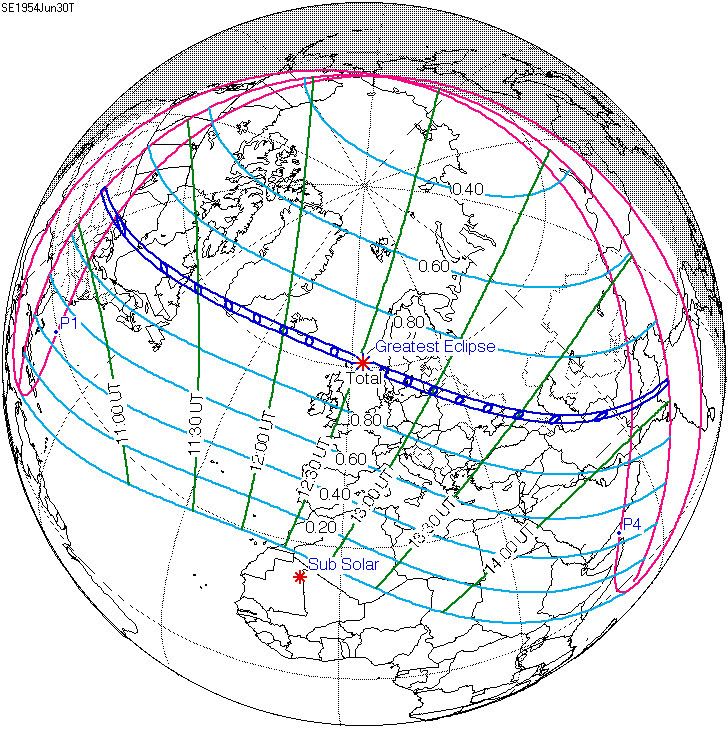Nature Total Magnitude 1.0357 Max. width of band 153 km (95 mi) Start date June 30, 1954 | Gamma 0.6135 Duration 155 sec (2 m 35 s) Greatest eclipse 12:32:38 | |
 | ||
A total solar eclipse occurred on June 30, 1954. A solar eclipse occurs when the Moon passes between Earth and the Sun, thereby totally or partly obscuring the image of the Sun for a viewer on Earth. A total solar eclipse occurs when the Moon's apparent diameter is larger than the Sun's, blocking all direct sunlight, turning day into darkness. Totality occurs in a narrow path across Earth's surface, with the partial solar eclipse visible over a surrounding region thousands of kilometres wide. Totality began at sunrise over the United States over Nebraska, South Dakota, Minnesota, and Wisconsin, and crossed into Canada, across southern Greenland, Iceland and Faroe Islands, then into Europe, across Norway, Sweden, and eastern Europe. It ended before sunset over Iran, Afghanistan, Pakistan, and ending in northwestern India.
Contents
Solar eclipses of 1953-1956
Each member in a semester series of solar eclipses repeats approximately every 177 days and 4 hours (a semester) at alternating nodes of the Moon's orbit.
Note: Partial solar eclipse of February 14, 1953 and August 9, 1953 belong to the last lunar year set.
Saros 126
It is a part of Saros cycle 126, repeating every 18 years, 11 days, containing 71 events. The series started with partial solar eclipse on March 10, 1179. It contains annular eclipses from June 4, 1323 through April 4, 1810 and hybrid eclipses from April 14, 1828 through May 6, 1864. It contains total eclipses from May 17, 1882 through August 23, 2044. The series ends at member 72 as a partial eclipse on May 3, 2459. The longest duration of central eclipse (annular or total) was 5 minutes, 46 seconds of annularity on November 22, 1593. The longest duration of totality was 2 minutes, 36 seconds on July 10, 1972.
Metonic series
The metonic series repeats eclipses every 19 years (6939.69 days), lasting about 5 cycles. Eclipses occur in nearly the same calendar date. In addition the octon subseries repeats 1/5 of that or every 3.8 years (1387.94 days).
